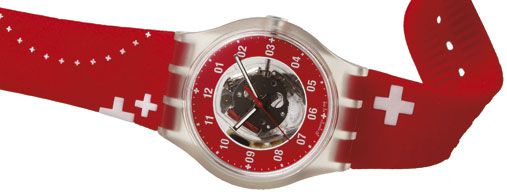
The great debate, which, under pressure from the barons of timekeeping, has just begun regarding a reformed definition of ‘Swiss Made’ leading to stricter requirements, is going to weigh heavily on the industry’s suppliers.
Called, up to now, watchmaking’s ‘annex branches’, similar to the secondary branches of a tree, the sup-pliers currently run the risk of finding themselves as the main trunk of the watch tree. We know that they are being smothered with orders and that they are trying hard to satisfy them all. In addition, they are also the coveted prey in a frantic race towards industrial verticalization by many brands seeking to establish their independence. All of a sudden, the number of ‘bottlenecks’ in the supply chain has grown considerably in an increasingly nervous environment.
Given this scenario, the reform of the term Swiss Made – there is nothing to say that it will actually be carried out especially in view of the vocal oppo-sition in Europe – can be perceived as either a unique opportunity for development or as a potential danger.
Why? At first glance, reforming the term is a wonderful opportunity. If 80 percent of the value of a mechanical watch should be of Swiss origin, (it is currently 50 percent) it would logically seem to follow that the number of Swiss component parts would automatically increase. This is certainly the case for the very high-end sector, which is leading the battle cry for a renewed definition of Swiss Made. But is it also true for the mid-range and lower-end segments of the market? There, things begin to get more complicated. For example, we know that the production of Swiss cases is not only largely insufficient to meet the demand, but that the costs are very high. The same holds true for Swiss dials.
However, as explains Peter C. Stas, owner of Frederique Constant: for a brand, which retails mid-range mechanical watches at CHF 1,000, to be able to comply with the 80 percent Swiss Made stipulation, “the only option currently available is to ensure that the foreign component parts are priced as low as possible.” By following this reasoning and by itemizing the prices of the various components and assembly oper-ations, we arrive at a surprising paradox. It is easier to obtain an 80 percent Swiss Made watch in the lower-end segment of the market than in the mid-range!
In a low-end watch with a cost price of CHF 95, for example, the price of a case and dial of poor quality made in Asia (CHF 10 and CHF 5, respectively) represent only a small percentage of the total price (about 16 percent). The lion’s share comes from the Swiss movement (an ETA 2824 costs CHF 65) and the assembly conducted in Switzerland (CHF 15), accounting for about 84 percent of the total price. So, as you can see, this immediately qualifies the piece as Swiss Made since more than 80 percent of its value comes from products originating in Switzerland.
However, the situation changes for the mid-range. Since the cost of a Swiss case is prohibitive (and in any case, there is not enough supply to meet demand), the brand must purchase a good quality case in Asia (CHF 45). Add CHF 8 for a good foreign dial, CHF 65 for an ETA movement, plus CHF 15 for assembly in Switzerland, and you have a piece at a cost price of CHF 133. In this example, the value of the Swiss components is only 60 percent of the total, so the watch does not qualify as Swiss Made!
This is a serious situation as it implies that meeting the 80 percent stipulation for Swiss Made could result in a decrease in quality. So, are there any alternatives? Certainly, says Peter C. Stas, who proposes that the calculation of the Swiss Made definition include the costs of research, development, design, and management. He also suggests that the Swiss Made label only be attributed to companies having their headquarters in Switzerland, with the related costs being included in the calculation for the Swiss ‘contents’.
These two ideas are interesting. But in the medium and long term, wouldn’t the real solution be a vast re-industrialization of the sector, where competitive prices can be guaranteed by the volume and productivity gains offered by more advanced technologies? In its own time, Swatch proved that it was possible. Is it possible again?
Source: Europa Star June-July 2007 Magazine Issue





